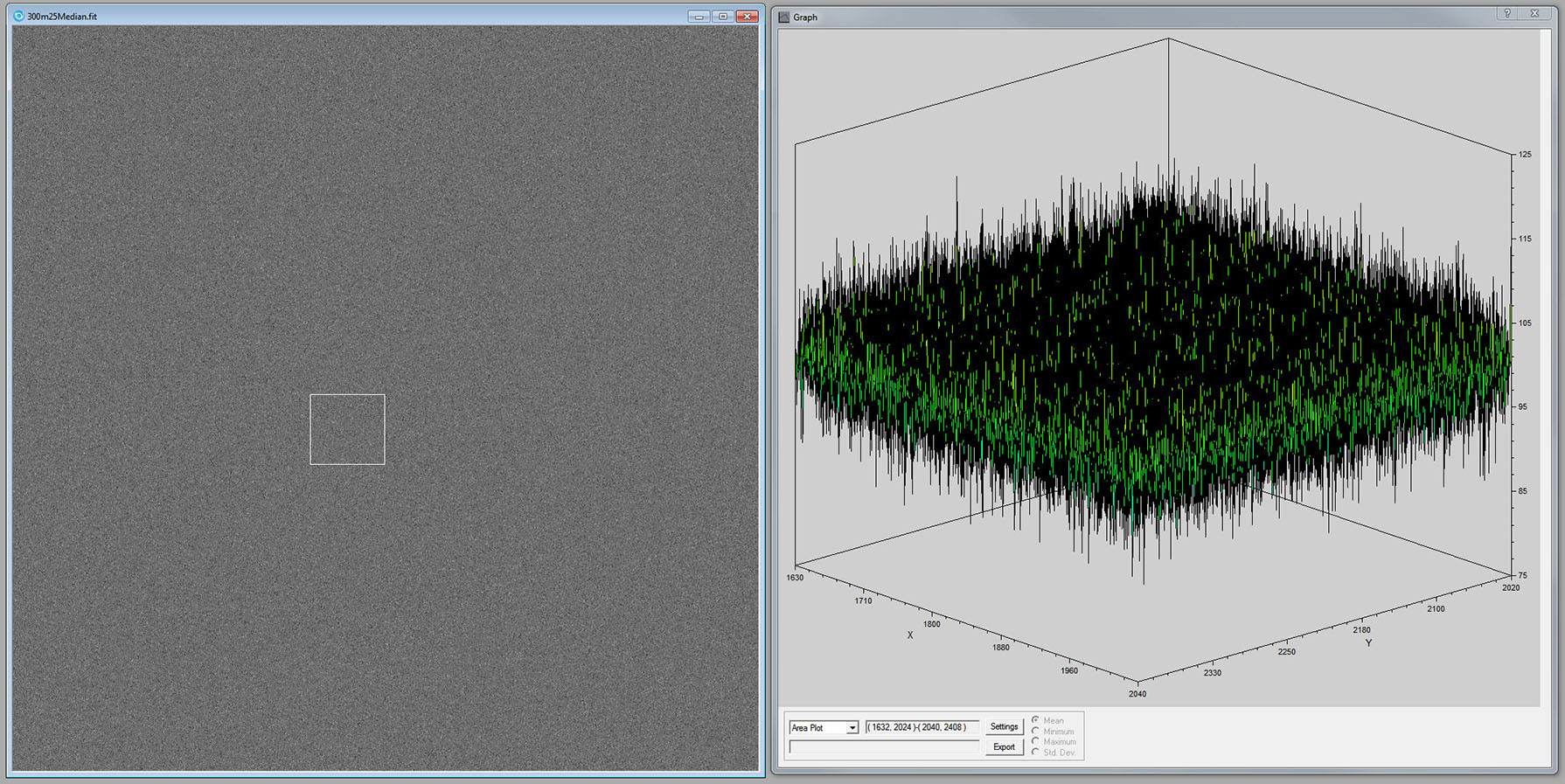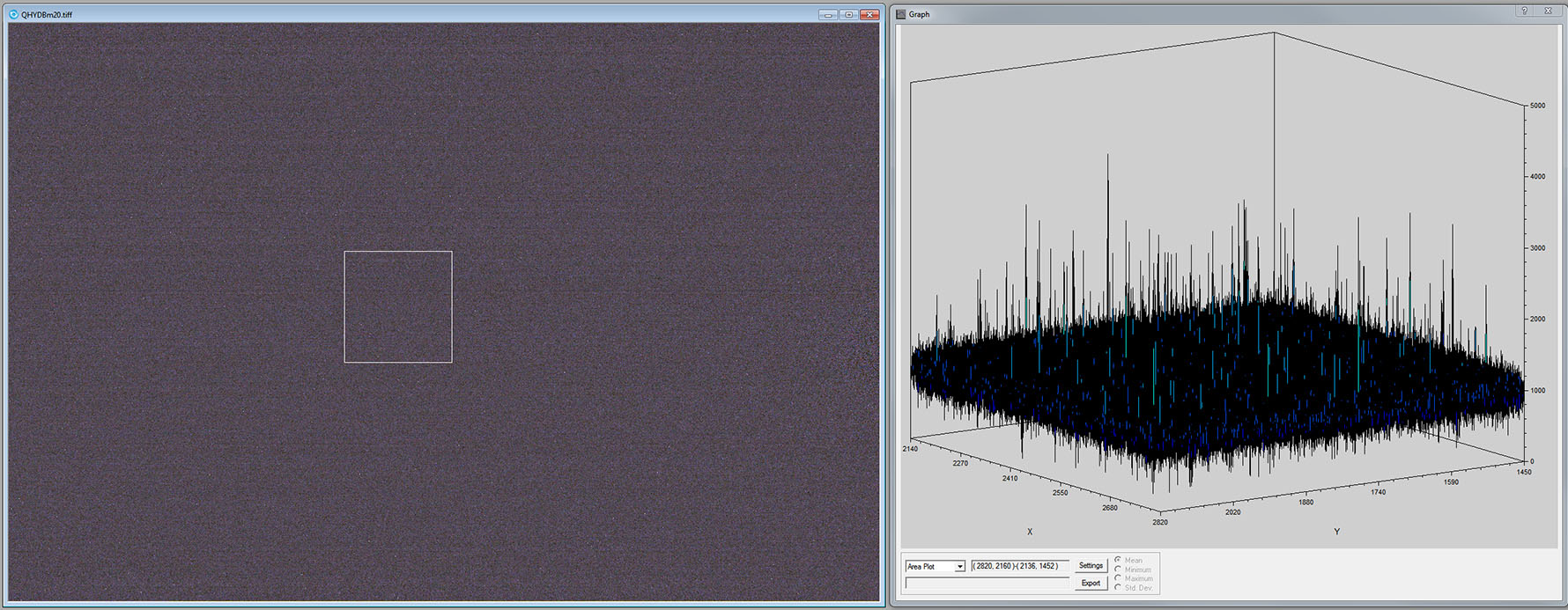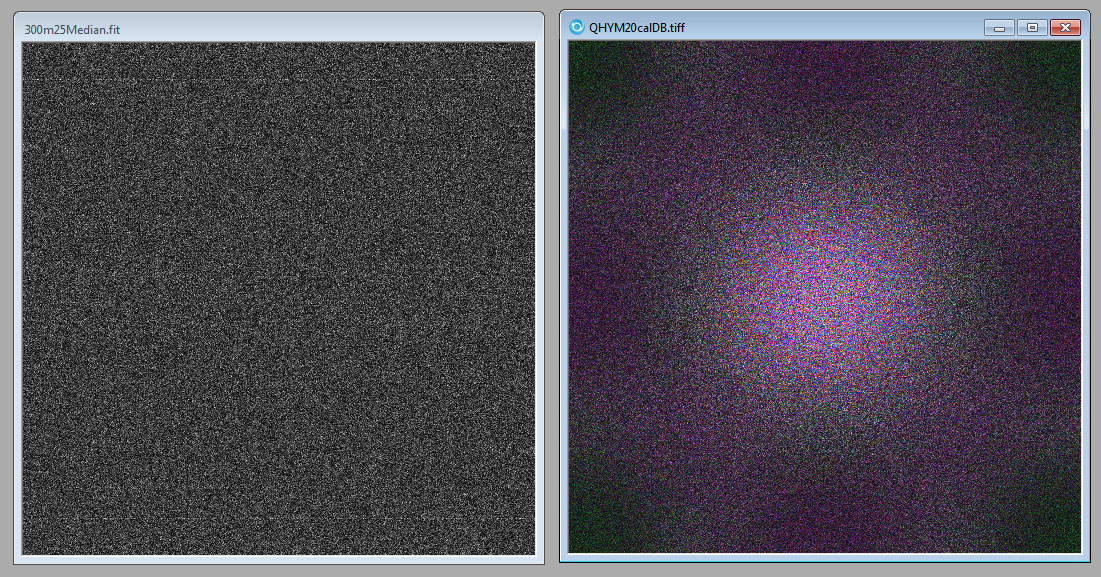
How clean is your camera?
Fixed pattern noise simply refers to a constant non-uniformity across a digital sensor, that causes a pattern to appear in images that is generated by the device itself. The pattern is not caused by an incoming signal. While it would be better if it were not present in the first instance, there are methods available to removed or at least minimise this unwanted pattern.
Design of the sensor also affects the device's uniformity. In CCD sensors each pixel value read by just one analogue to digital converter, hence there is excellent uniformity in the readout process. In CMOS sensors each pixel is doing its own conversion, so uniformity is lower.
|

Above: STX16803 CCD median combined dark frames showing no fixed pattern
plus excellent uniformity with pixel value variations of just of around 10 parts in 65,000

Above: QHY183C CMOS median combined dark frames showing slight horizontal banding
plus a few hot pixels but otherwise good uniformity.
Off chip methods essentially come down to flat-field calibration. Applying a flat field correction not only removes any optical vignetting and shadowing from dust motes and the like, it also maps pixel sensitivity variations. Flats fields are simply good practice as they also restore the relative illumination differences within an object or scene.
You can test your camera for fixed pattern noise by simply median combining several dark frames, say of 30 seconds duration, then convert the image using a fast fourier transform (FFT) filter. Any repeating pattern will be quickly revealed by the FFT filter as seen in the images below. |

Above: At left is the FFT result from a SBIG STX16803 CCD median dark and shows random speckle with no harmonic components.
At right is the FFT result from a QHY183C CMOS camera median dark and shows mild underlying fixed pattern noise.
Copyright Peter J Ward 2019